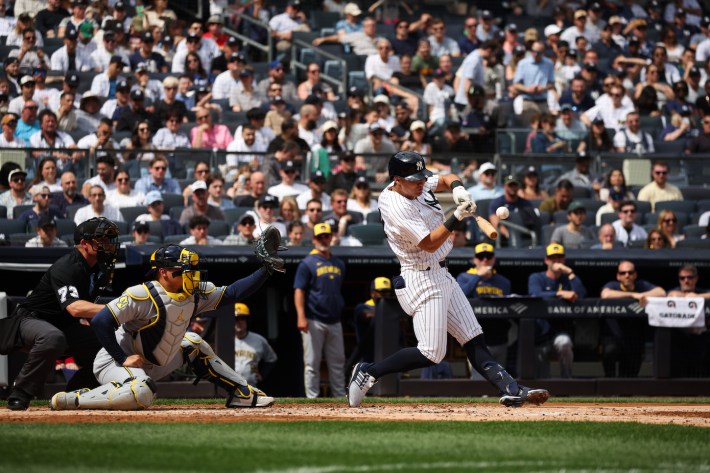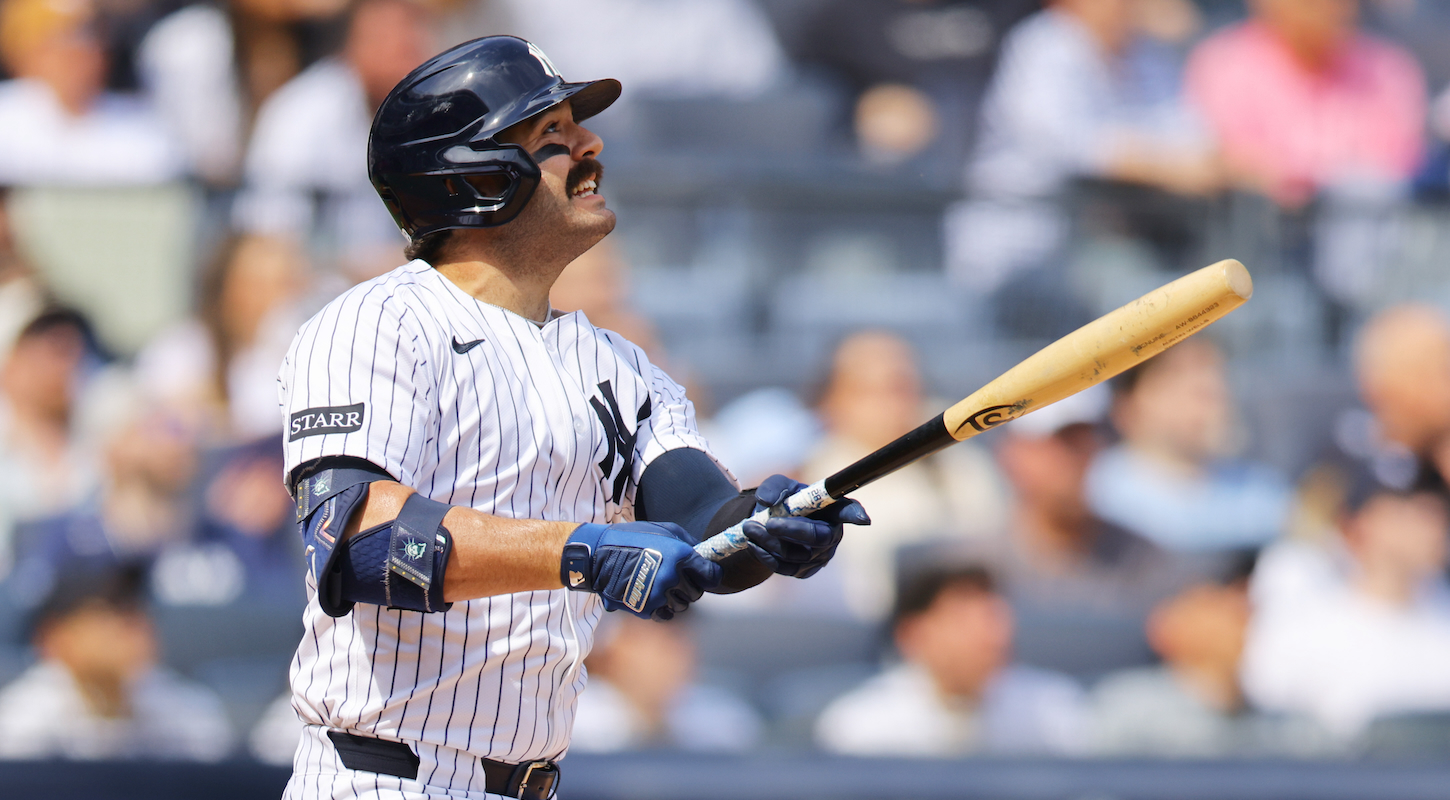If the Yankees hadn’t hit a record-matching 15 home runs in three games to start their season, the discourse around their torpedo-shaped bats would look very different. As it stands, the bats have spurred accusations of cheating and stories that contain the dreaded figure of a former MIT physicist, who is nicknamed Lenny and is “the man.” (Aaron “Lenny” Leanhardt, credited as one of the original evangelists of the bat, left the Yankees in the offseason and is now a coach with the Miami Marlins.)
To get it out of the way, the bats are entirely legal. If MLB’s confirmation of such wasn’t enough, official rule 3.02 states that a bat “shall be a smooth, round stick not more than 2.61 inches in diameter at the thickest part and not more than 42 inches in length” and “shall be one piece of solid wood.” What is different about the torpedo bat is not necessarily its barrel diameter, but how the wood on the barrel is distributed: Rather than the even taper that most bats have on the barrel, the torpedo bat moves weight from the top of the bat, where hitters do not want to make contact, to the sweet spot of the bat, which players gesture to as the best place to hit a baseball.

Intuitively, the end result shifts the center of mass of the bat closer to the hands, and allows a thicker barrel where it matters without having the trade-offs of a heavier bat that could come at the cost of bat speed. Determining whether the bat makes an actual difference will require a sample size larger than three games—one of which took place in a homer-happy park on an 80-degree day against a former pal that hitters would be very familiar with—but player testimonials have been positive, if just regarding a big bat’s positive impact on mentality.
“It’s probably just a placebo,” said Anthony Volpe, who is currently on pace for a 108–home run season. Volpe had made mechanical adjustments in October that he felt improved his swing. “A lot of it is just looking out at your bat, and you see how big the barrel is. It’s exciting. I think any 0.001 percent mentally that could give you confidence helps.” In terms of measurables, Volpe’s average bat speed stands at 71.8 miles per hour this year (again, sample size: three games), while last year it was 69.3; the highest bat speed he had month-by-month in 2024 was 70.0 miles per hour, in August. Jazz Chisholm Jr., noted trier of bats, switched to the torpedo bat after borrowing Volpe’s in spring training. His bat speed is up to 73.6 miles per hour this year, compared to his average of 71.8 last year.
Cody Bellinger has been more concrete about the differences of the new torpedo bat. Bellinger reportedly tried the bats when he was still with the Chicago Cubs but didn’t switch to using the new bats until this spring training. “The benefit for me is, I like the weight distribution,” said Bellinger, who is currently on pace for a 54–home run season. “Personally, the weight is closer to my hands, so I feel as if it’s lighter in a way. For me, that was the biggest benefit. Obviously the bigger the sweet spot, the bigger the margin for error.” Going by the same quick and dirty bat-speed heuristic, Bellinger’s bat speed is up to 71.4 miles per hour this year compared to his average of 69.0 miles per hour last year.
There is one certain and one possible exception of note to these success stories. Aaron Judge, who happened to hit three of the Yankees’ nine homers on Saturday, was not using the new torpedo bats. “What I’ve done the past couple of seasons speaks for itself,” Judge, who is currently on pace for a 216-homer season, said. Fair enough, man. (For the bat-speed heuristic, Judge’s average bat speed thus far is no faster than his average speed last year.) Then there’s prior to this season, when Giancarlo Stanton was suffering from torn ligaments in both elbows and mentioned that it was “probably some bat adjustments” that led to the issue, though it remains unclear whether it was due to the torpedo bats; Leanhardt declined to comment on Stanton’s injury in an interview with the Athletic.
With legality out of the question, and the Yankees generally mum on the root cause of Stanton’s injury, the issue of the bats is so far more of a curiosity than anything concrete. Generally speaking, any technological development that may help hitters is a neat development in an era of increasing pitcher dominance, though with a grand sample-size of three games, it’s unclear exactly in what ways and to what degrees the bats may help hitters. Asking people to excitedly watch Statcast is a bit of a tall ask; I’m sure everyone watching the league will continue to have reasonable reactions to the fact that Jazz Chisholm Jr. is currently on pace to sock 162 dingers this season.

